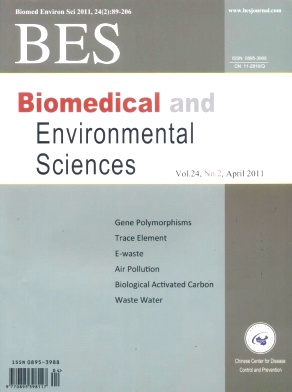Bacterial Community and Function of Biological Activated Carbon Filter in Drinking Water Treatment
doi: 10.3967/0895-3988.2011.02.006
-
Key words:
- Biological activated carbon /
- Bacterial community /
- Denaturing gradient gel electrophoresis
Abstract: Objective It aims to investigate the changes in composition and structure of bacterial communities de-veloping on biological activated carbon (BAC) particles, and the bacterial functions. Method A pilot plant had been in service for 180 days, aiming to develop bacterial communities on acti-vated carbon naturally. After 180 days of operation, the bacterial communities were determined by dena-turing gradient gel electrophoresis (DGGE) analyses of PCR-amplified 16S rRNA genes. The study on community composition and the phylogenetic relationships of the organisms was complemented by a se-quence analysis of cloned PCR products from 16S rRNA genes. Gas chromatorgaphy-mass (GC-MS) mea-surement was used to determine organic chemical composition of inflow and outflow water on the 300th day. TOC and NH<,4><'+>-N were also tested in this experiment. Results It showed that the stable bacterial structure did not develop on BAC particles until the 9th month during running time of the BAC filter. The communities were finally dominated by Pseudomonas sp., Ba-cillus sp., Nitrospira sp., and an uncultured bacterium. Stable bacterial communities played an important role in removal of NH<,4><'+>-N and total organic carbon (TOC). Results from gas chromatorgaphy-mass (GC-MS) showed that 36 kinds of chemicals in feed water were eliminated, and concentrations of 5 kinds of chemicals decreased. These chemicals served as nutrients for the dominant bacteria. Conclusion The findings from the study suggested that the stability of microbial structure was beneficial for improving NH<,4><'+>-N and TOC removal efficiencies. The dominant bacteria had the advantage of biode-grading a wide range of organic chemicals and NH<,4><'+>-N.
| Citation: | ZHANG DuoYing, LI WeiGuang, ZHANG ShuMei, LIU Miao, ZHAO XiaoYu, ZHANG XianCheng. Bacterial Community and Function of Biological Activated Carbon Filter in Drinking Water Treatment[J]. Biomedical and Environmental Sciences, 2011, 24(2): 122-131. doi: 10.3967/0895-3988.2011.02.006 |







 Quick Links
Quick Links
 DownLoad:
DownLoad: